Salmon is probably the king of all fish.
It’s extremely high in beneficial nutrients, low in mercury, and delicious too.
However, depending on how we cook it, we can either make it taste amazing or end up with a dull, boring taste.
If you’re looking for some ideas on how to serve your salmon fillets, then this article will show you how to cook salmon perfectly.
Also, some tasty and easy recipes are thrown in.
Preparation and De-boning
First, we need to start by preparing the salmon, removing the skin and taking the bones out.
If your salmon has already been deboned, then you can skip this part.
If not, here’s what to do;
Removing the Skin
- Place the fish skin-side down on a cutting board.
- With a very sharp knife, carefully slide the blade between the skin and the fillet from one end to the other.
Remove the Pin Bones
To make the deboning process easy, some fish bone pliers (otherwise known as ‘needle-nose pliers’) are a great help.
How to debone
- Skim the top of the salmon with your finger. You will feel the little sharp pin bones pushing out or just below the surface of the fillet.
- Grab the end of each bone with the pliers, and remove it at the same angle it is penetrating the surface.
- Once removed, search the surface for more bones until there is none left. An average size fillet of salmon may have 20-30 bones.
 How to Cook Salmon
How to Cook Salmon
There are so many different ways to cook salmon.
All of these methods produce a delicious tasting fillet, but they all require a slightly different approach.
Let’s take a look at how to make salmon tasty every time for the most common ways of cooking.
1. Grilled Salmon
Cooking a fillet of salmon on the grill or a BBQ gives a deep and flavorful taste.
It’s also the perfect occasion for a hot summer’s day – get some family or friends round and grill up some salmon in the garden!
How to do it
- Lightly cover the salmon with a marinade of fresh lemon juice, butter, crushed garlic, salt, and pepper. Leave it sitting in the marinade for approximately 30 minutes.
- Place the fillets skin-side down on the grill or BBQ.
- Grill on a medium heat for 5-10 minutes, and then flip the salmon over.
- Let the other side of the fillet cook for a similar amount of time. When it’s ready, the fish should be a light pink color and flake easily under pressure.
- Serve with a side of lemon and tamari soy sauce.
Tips
- If your grill/BBQ has a temperature control function, then cooking at a medium heat is best.
- Try combining with a side-salad and several other types of seafood for a delicious outdoor BBQ party.
2. Pan-Fried Salmon
Pan-frying is the fastest way to cook salmon, and if you do it right, it’s one of the tastiest too.
The goal is to end up with crispy pan-seared skin, but not to burn or overcook the fillet.
Cooking salmon in a pan only takes around 10 minutes max.
How to pan-fry
- First, remove the salmon from the refrigerator at least 20 minutes before you’re ready to cook. A chilled fillet will stick to the pan and break apart when you try to move it.
- Next, heat a frying pan (cast iron skillets are a good choice) on the stove at a medium-high temperature.
- Once the pan becomes hot, add a tablespoon of cooking fat. Butter, lard, and extra virgin olive oil are all good options.
- Season the salmon fillet with salt, pepper, lemon and any other seasonings you like. After this, place the salmon fillet in the pan, skin-side down.
- Don’t touch or move the fillet, but observe it carefully. As the fish cooks, the skin will gradually become a light pink color. How long this takes depends on the thickness of the fillets, but a cooking time of 5-8 minutes is typical.
- Once the salmon is all light pink except for the very top, flip the fish over and let it cook for a minute or two.
- Once the fish is light pink throughout, you can tell the salmon is cooked. Remove from heat and leave it to rest for a few minutes before serving.
- Serve with a side dish of your choice.
Tips
- Provide some additional seasonings at the table – salt, pepper, and slices of lemon are always good.
- Eat the skin! The skin should be crispy on the outside and soft on juicy on the inside. Aside from tasting delicious, it’s full of beneficial nutrients and omega-3 fatty acids.
3. Poached Salmon
While poached salmon might not sound the most appetizing, it is one of the healthiest ways of cooking fish.
That said, it tastes so much better if you use a creamy sauce as an accompaniment.
With the right ingredients, combining poached salmon with a cream sauce tastes delicious.
How to poach salmon
- Take a large pan/pot and place the fillet(s) on the bottom.
- Fill the pot with water until the salmon is fully submerged.
- Add a liberal amount of salt to the pot, and then simmer at a medium-low heat and cover with a lid.
- After poaching for around 10-15 minutes, the salmon will be ready. Start checking the consistency after the first 10 minutes – it should be pink and firm.
- While the salmon is poaching, you can start to make a sauce to serve it alongside.
Creamy White Wine and Lemon Sauce
One of the best sauces for salmon is a creamy white wine sauce with lemon.
These ingredients are per person, so you can just multiply by the number of people you are cooking for.
- 1/4 cup (60ml) heavy cream
- 1/2 cup dry white wine
- 1 shallot
- Clove of mashed garlic
- 1 tablespoon of freshly chopped chives
- Squeeze of fresh lemon juice
- Salt and pepper to taste
- Add the heavy cream, lemon, and dry white wine into a pot and bring to a (near) boil.
- Just before the sauce starts boiling, turn down the heat and simmer at a medium-low temperature.
- Put the shallot, garlic, and chives into the pan, season with salt and pepper, and stir gently.
- Keep occasionally stirring at a low heat until the source starts to thicken.
- Once the sauce reaches the desired consistency, take off the heat.
- Pour the cream over the salmon fillet and the meal is ready!
Tips
- Try serving with some greens. Vegetables like asparagus, broccoli, and green beans go well with this kind of dish.
- If you prefer a butter white wine sauce, you can substitute out the cream for butter.
4. Broiled Salmon
Despite the similarities, some people are unaware of the differences between broiling and grilling.
The main difference relates to where the heat comes from;
- While both methods cook food by intense heat, broiling involves using a heat source above the food. Grilling is the opposite.
- When grilling, the food is in direct contact with a scorching grill. However, food sits a few inches away from the broiler.
How to broil salmon
- First of all, set the oven rack to the rack you prefer. Broiling the fish on the top rack results in a shorter cooking time, and seals more juices inside the fish!
- Preheat the broiler.
- Brush the salmon fillet with either butter or olive oil, and add salt equally across the surface.
- Add some ground black pepper, pure garlic powder, a few pieces of fresh dill and a slice of lemon on top.
- Next, put the salmon under the broiler and leave it for about 5-10 minutes. The time will depend on the fillet thickness and how hot your broiler gets.
- You don’t need to turn the fillet round, but keep a watch on it to make sure it’s not burning.
- Once the fish flakes under pressure and has a light pink color, it’s ready.
- Take the salmon out of the oven and leave to cool for a few minutes before serving.
Tips
- Salted spinach cooked in butter makes a delicious accompaniment to broiled salmon.
salmon might burn if you cook it for too long.
5. Steamed Salmon
Steaming is a very gentle method of cooking salmon and leaves the fish very juicy.
This recipe uses Chinese-style flavors to create something a little different, and requires the following ingredients per fillet;
- 1 tsp tamari soy sauce
- 1/2 tsp sesame oil
- 1 clove mashed garlic
- 1/2 tsp mashed grated ginger
- 1 tbsp fresh chives
- A squeeze of lemon juice
- Sprinkle of ground black pepper
- 1/2 tsp chili powder
How to Steam Salmon
- Prepare the steamer for cooking the salmon. You can either use a stainless steel bowl over water or a digital food steamer.
- Make a Chinese seasoning paste using all the ingredients listed above and rub it onto the surface of the fillet.
- Place the salmon in the steamer and pour any remaining seasoning mixture on top.
- Steaming doesn’t take too long to cook – approximately 10 minutes depending on your choice of steamer and settings.
- Serve alongside some steamed veggies of your choice.
Tips
- Make some room for your favorite vegetables and steam together for a side of steamed veggies.
6. Baked Salmon
Probably the easiest method of cooking salmon is to bake it – just open the oven door, put it in, and leave it to cook!
Baking salmon at a lower heat for a little longer keeps it moist and juicy inside.
There are two great advantages of oven-roasted salmon;
- It tastes delicious.
- Using the oven frees up the stove and some time to make some tasty side dishes.
Here’s how to bake salmon
- Preheat the oven to 350°F (175°C)
- Put a bit of butter, salt, and pepper on the fillet.
- Place the salmon skin-side down on a baking sheet in a baking tray.
- Cook for around 15 minutes. It might take a little bit longer depending on your particular oven.
- The salmon is ready once it’s a little firm on the outside and flakes easily.
- Serve with a side salad, some olives and a thick slice of lemon.
Tips
- Season the salmon with a little extra salt and pepper after removing from the oven.
7. Don’t Cook (Salmon Sashimi!)
If you don’t feel like cooking and can afford to spend a bit more, then salmon sashimi is a tasty alternative.
That’s providing you don’t mind the idea of raw fish of course!
With sashimi, you can be sure that you’re getting the maximum amount of omega-3 and other essential nutrients.
And buying some sashimi-grade salmon means you can relax and not worry about having to cook!
What is the Healthiest Way To Cook Salmon?
As salmon contains heat-sensitive omega-3 fatty acids, does that mean it’s very delicate when we cook it?
Some people think so, and the train of thought seems to make sense.
However, in whole foods—in a food matrix of nutrients and antioxidants—these fats have very different heat resistance to isolated PUFA.
This ‘food matrix’ of salmon includes antioxidants like astaxanthin which help protect the omega-3 fatty acids from oxidizing (1).
Further studies have found no major nutritional differences between the different ways of cooking salmon and other oily fish (2, 3, 4).
Interestingly, steaming creates more oxidation products than light pan-frying, which is likely due to a longer heat exposure (5).
In short, despite poaching and steaming being “gentler,” all cooking methods can be healthy.
Tastiest Method of Cooking
Is salmon better on the grill or in the oven?
Everyone has their preference, but for me, nothing beats an oven-baked salmon steak.
Lastly, did you know that there are seven popular types of salmon? See here for a full guide to how they compare.
For more on salmon, see this in-depth look at the nutrition benefits of salmon roe.

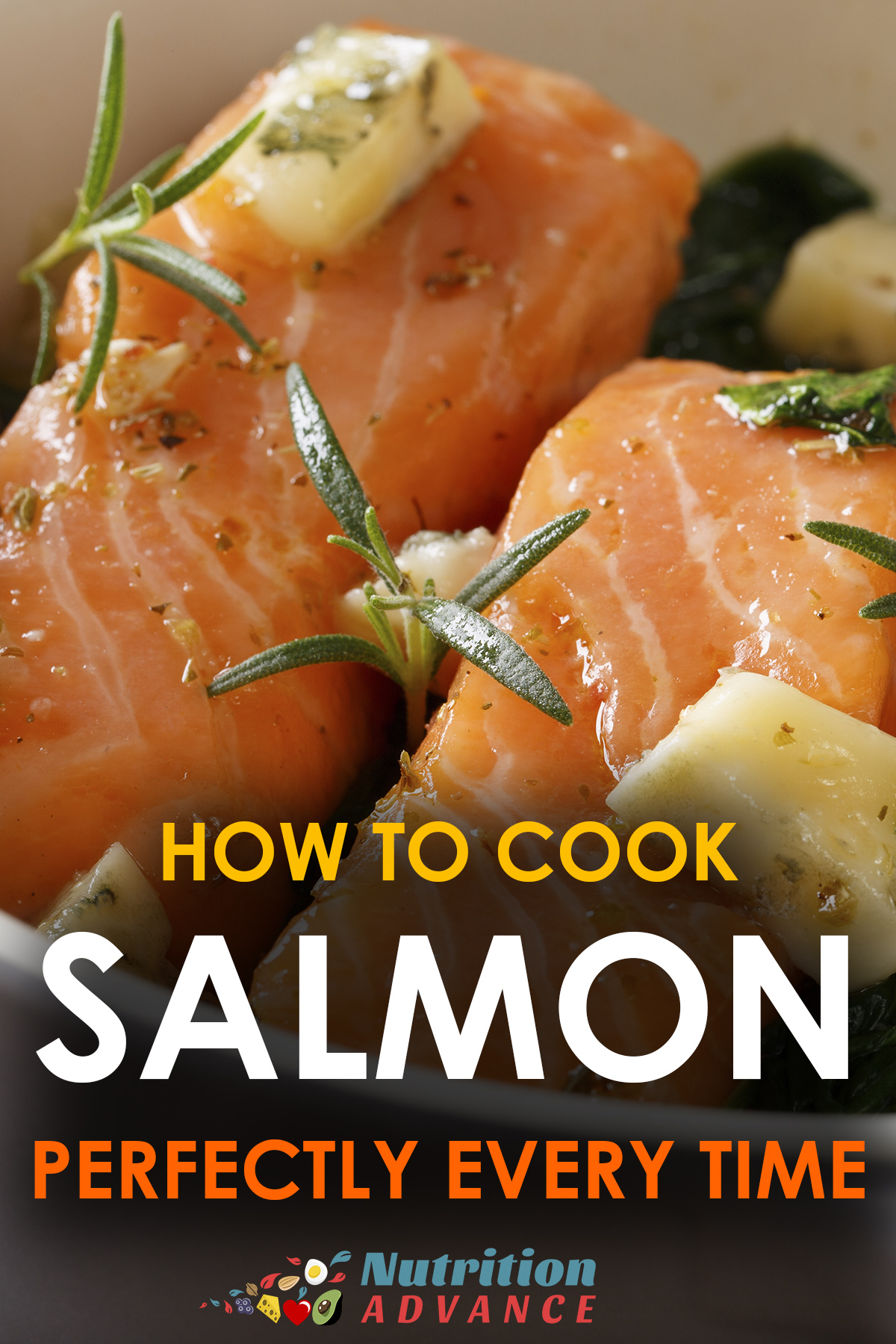
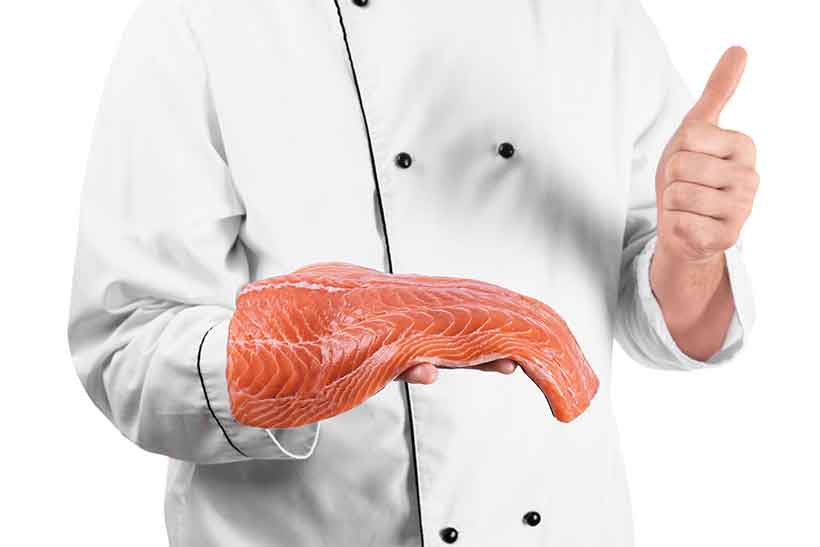
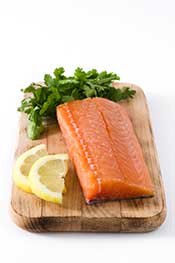 How to Cook Salmon
How to Cook Salmon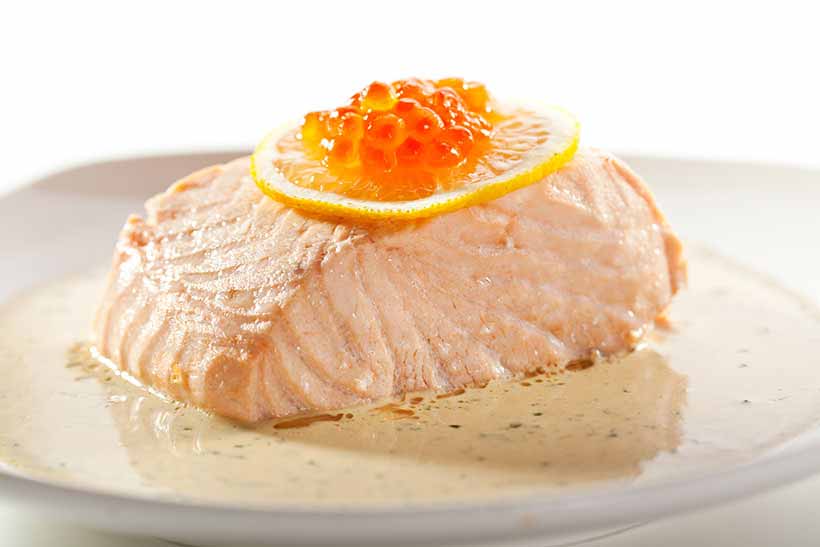
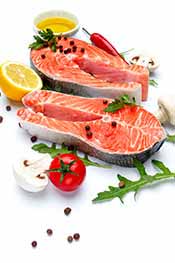
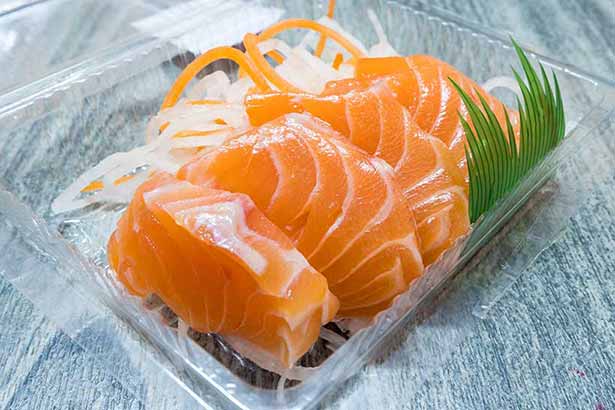
Ty for taking the time to post those recipes!! ☺
No problem – enjoy! 🙂